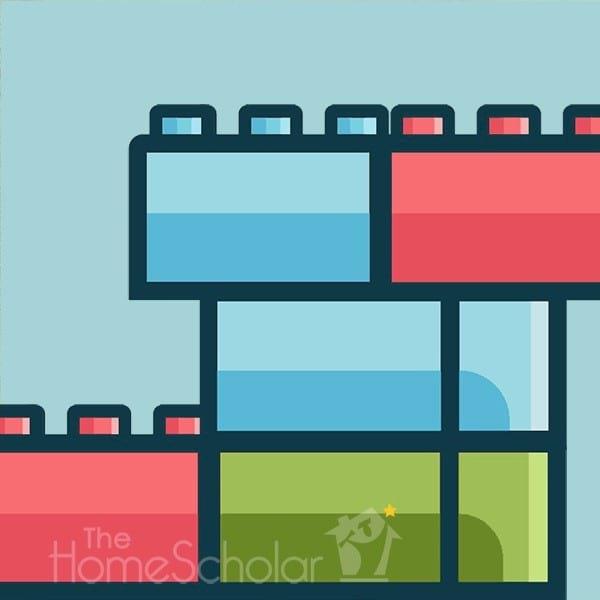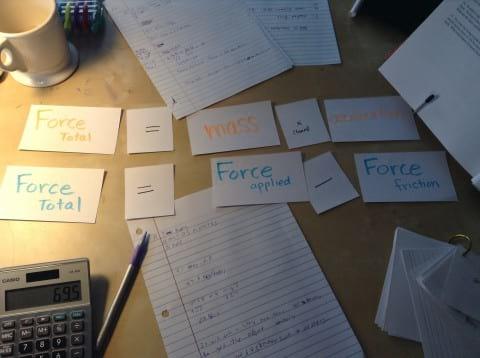17 Tips for Kinesthetic Learners in High School
An active learner, or kinesthetic learner, often learns best by moving. Even when they are high school age. And you can use their movement to your advantage!
{NOTE: This post contains affiliate links. If you click and buy, I make a few pennies, but sadly, not enough for a latte.}
How can you identify a kinesthetic learner?
It's almost like some kids need to move the large muscles of the legs or upper arms, or else their brain just doesn't click into gear. Instead of sighing, wringing your hands, or just giving up, you can embrace their learning style. Think of ways to incorporate arm and leg movement into your high school day.
Identify a kinesthetic learner by looking for common clues. Usually they are moving. They will often use "moving" verbs when they talk, like saying "Feel this!" or "Can you touch/move/do this?" or "Watch me do this!" They move a lot; fidgeting, tapping, running, or just chewing gum. Many kinesthetic learners will hold a pen or pencil with a death grip, and have very dark print because of it.
Embrace this information as good news, because once you know your child's learning style, you can help them utilize their personal characteristics to improve learning, and show them how to adapt and learn as they go to college and into adulthood.
Active learners need to engage in the learning process, but it doesn't always mean by movement. Teaching strategies for this type of learner will pull the student in to the learning process, often while movement is involved, but not always. It might be as simple as working together through journaling, reading together, role playing, or having a discussion about something that they read.
Try these tips to help your kinesthetic learner.
1. Adapt your study location to allow for movement
2. Alternate seat work and active work
3. Bounce a ball
4. Chew gum
5. Draw diagrams and stick figures
6. Get up regularly
7. Jog in place on a trampoline while watching teaching videos
8. Listen to audio books or textbooks while exercising
9. Memorize with flash cards
10. Study or write while sitting on a yoga ball
11. Stand up while working by using a standing desk
12. Take multi-colored notes with colored pens or markers
13. Teach others what you know: sibling, friend or study partner
14. Use repetitive movements (tap a foot) while reading
15. Walk (on a treadmill) while reading, or listen to audiobooks while walking outdoors
16. Encourage active classes, like PE, music, dance, or mechanics.
17. Do lots of hands on projects
One of my Gold Care Club members used her wisdom with flash card trains and applied it to her son's science work. This was extremely beneficial in helping him learn key concepts using large fonts and large motor skills. As he moves the cards to create different science equations, he was moving the large muscles of his arms just enough to keep his attention. What a great idea!
Moving the large muscles of the body is extremely helpful in teaching active learners. In elementary school, you can embrace their learning style (movement) with play, games and activities, and hands-on projects. In high school, you can continue with many of those same helpful strategies.
You can find more ideas to help active learners in this post, Teaching Strategies to Help Struggling Learners.
I see news articles all the time about different ways that public school teachers cope with active learners. It's hard to keep kids seated and engaged in this excessively test-driven educational world without medication. But when we are homeschooling, we can increase the activity of our children as they learn, by using kinesthetic strategies like those listed above.
Parents of active learners, how do you encourage large muscle movement into your school day?

 Login
Login









.jpg)

Comments 3
I am just realizing my son is a kinesthetic learner... He does not test well. When he does homework he likes to go outside for a while in between and play basketball, He is always telling me school is so boring, it's just not fun. He has always gone to public school, now in 9th grade, and his grades are dropping. I think he is very discouraged at this point. He does not think he is smart because of his grades. Teachers have always told me he is easily distracted. In elementary/middle school they told me he gets up multiple times to sharpen his pencil. He has always said recess was the best part of his day then in middle school recess stopped. He has always loved gym class. He is a very bright kid and I feel as though I should have him in a different learning environment.
I feel you, my 15 year old is the same way. We actually just withdrew him from public school. I'm curious, is your son still in public school? If not, what curriculum are you using to home school him?
This is a big problem in a typical high school. Most teachers (of course, there are exceptions) teach in a way that works for a small percentage of students. Those are the children who easily absorb information, have little or no difficulty sitting still for long periods of time, and can regurgitate information gained by rote learning. Homeschooling works well for many of these students because - at home - we can implement many of the tactics Lee covered in the blog post, thereby teaching while meeting your child's needs. Maybe your son is destined to be an athletic trainer, or perhaps rote learning will be easier when he is older, and he will opt for traditional college. Who knows? For those who homeschool during high school, however, Lee encourages parents to "cover core and capture delight". She talks about how to do that in this article: https://www.homehighschoolhelp.com/delight-directed-learning
Blessings,
Robin
Assistant to The HomeScholar